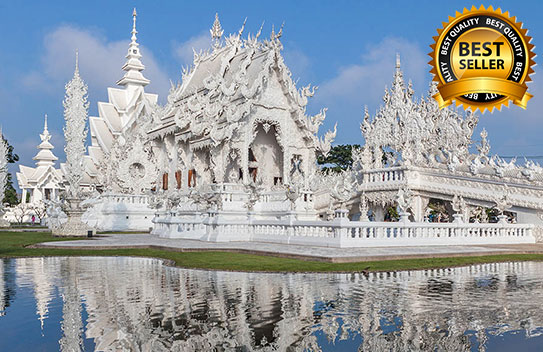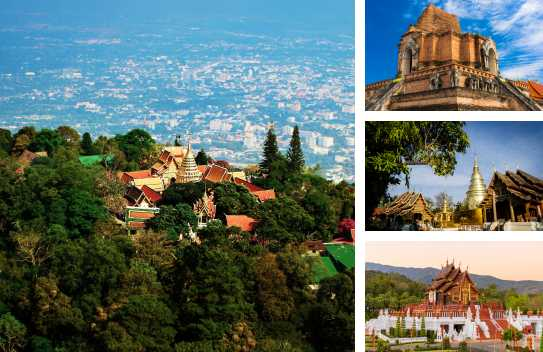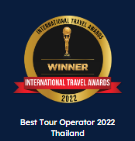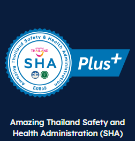DAY 01 : PHNOM PENH
Arrival in Phnom Penh
Transfer
Sightseeing in Phnom Penh
Explore Phnom Penh, a chaotic, energetic and always fascinating city. Graceful tree-lined boulevards and riverfront promenades are reminders of bygone eras; today they teem with life and activity, as motorcycles weave in and out of traffic, vendors hawk their wares, and pedestrians go about their business. Start the tour with an insight into Cambodia s cultural heritage with a visit to the Royal Palace, still the official residence of King Norodom Sihamoi and the adjacent Silver Pagoda, also known as the Pagoda of the Emerald Buddha. Continue to the elegant National Museum, which contains a comprehensive collection of Khmer Art. Finally, explore the modern-day city, visiting one of Phnom Penh s two great markets, the Central Market, located in a distinctive domed Art Deco building or the sprawling Russian Market, a labyrinth of stalls selling everything from CDs and DVDs to silks, crafts, jewellery and more.
Overnight : Phnom Penh
Meal : x
DAY 02 : PHNOM PENH
Excursion to Takeo (Tonle Bati and Angkor Borei and P. Da)
The province south of Phnom Penh hosts several interesting historical sites, including Angkor Borei. You will visit:
Tonle Bati: a lake south of Phnom Penh, with a beach and the impressive laterite temple of Ta Prohm.
Ta Prohm: a temple built by King Jayavarman VII (who ruled from 1181 to 1201) on the site of a 6th century Khmer shrine. A stele found here dates from 1574, and inside the north gate is a statue of the Hindu god Preah Noreay.
Angkor Borei: a 6th century monument built in laterite by King Rudravarman of Funan. His patron deity was Vishnu and many Hindu statues survive from this site. It is one of the few remaining sites that show the traces of the Kingdom of Funan (a kingdom influenced by Hindic-India and thought to have spread as far as southern Burma and into Indonesia).
Phnom Da: a hill south of Angkor Borei with four artificial caves, built as shrines. On top of the hill is a square laterite tower.
Overnight : Phnom Penh
Meal : Breakfast (Hotel)
DAY 03 : PHNOM PENH - KAMPONG THOM
By vehicle from Phnom Penh to Kampong Thom with sightseeing at Oudong, silver smith & Prasat Kuhak Nokor
Travel from Phnom Penh to Kampong Thom stopping on the way at Oudong, the former capital of Cambodia from 1618 to 1866. The twin ridges of Phnom Oudong feature several stupas containing the ashes of former Khmer kings. On the larger hill are the remains of Vihear Preah Ath Roes, Vihara of the 18-Cubit Buddha. After exploring the temples, enjoy the panoramic views of the Cambodian countryside. Continue on to a silversmith village, where the inhabitants specialise in making silver and copper ornamental items, including delicately engraved tropical fruits that are used in traditional ceremonies. Also visit the 11th century Prasat Kuhak Nokor.
Overnight : Kampong Thom
Meal : Breakfast (Hotel)
DAY 04 : KAMPONG THOM - SIEM REAP
Sightseeing around Kampong Thom
Travel just outside Kampong Thom to explore Sambor Prei Kuk, perhaps the most important group of pre-Angkorian monuments in Cambodia. Before the rise of Angkor, this was the capital of Chenla during the sixth century. Today, over 100 small temple ruins sit peacefully in a forest setting. Explore the main central complex and gain an insight into the early architectural styles of Cambodia. Afterwards, continue to the modern-day shrines of Wat Andri, a thriving monastery.
By vehicle from Kampong Thom to Siem Reap
Overnight : Siem Reap
Meal : Breakfast (Hotel)
DAY 05 : SIEM REAP
Sightseeing in Angkor
Visit Angkor Wat
The crown jewel of Khmer architecture, Angkor Wat is the national symbol and the highlight of any visit to Cambodia. The largest, best preserved, and most religiously significant of the Angkor temples, Angkor impresses visitors both by its sheer scale and beautifully proportioned layout, as well as the delicate artistry of its carvings. To approach the temple, first cross the vast moat, continuing along a broad causeway lined with naga balustrades. Upon entering the main structure, ascend through a series of galleries and courtyard before reaching the central sanctuary, which offers beautiful views back over the causeway and across the surrounding countryside. On the way, stop to enjoy the intricate stone carvings that adorn nearly every surface of the temple, with some 1,700 Apsaras, or celestial dancers, sculpted from the walls. Along the outer gallery walls run the longest continuous bas-relief in the world, which narrates stories from Hindu mythology, including the famous Churning of the Ocean of Milk. Angkor Wat is stunning at any time of the day, but sunrise and sunset are especially beautiful times to watch the play of light on the stones.
Visit Angkor Thom
The fortified city of Angkor Thom covers an area of 10 square km. Enclosed by a wall and wide moats; the city includes many of Angkor s most popular sights. Enter by the monumental South Gate over a causeway lined on either side by statues of demons and gods, each carrying a giant naga. Continue to the Terrace of the Elephants and the Terrace of the Leper Kings, former spaces for public ceremonies, both adorned with dramatic bas reliefs. Visit the ruined Baphuon, Royal Enclosure and Phimeanakas before continuing to the mysterious Bayon Temple. In this temple, one of the most popular and compelling in Angkor, explore the galleries of beautifully preserved bas reliefs and ascend narrow stairs to reach the central sanctuary, where giant stone faces smiling enigmatically down from every angle.
Visit Ta Prohm temple
Ta Prohm is one of the most popular attractions of Angkor as much of the jungle has not been cleared and it looks very much as most of the Angkor monuments would have appeared when European explorers first stumbled across them.
Visit a temple for sunset
Watch the sun set over the Cambodian countryside from the upper terraces of an ancient Angkorian temple.
Overnight : Siem Reap
Meal : Breakfast (Hotel)
DAY 06 : SIEM REAP
Excursion to Banteay Srei
Banteay Srei was built in the late 10th century, it is a Hindu temple dedicated to Shiva. The temple is square with entrances on the east and west. Of main interest are the three central towers which are decorated with male and female divinities and beautiful filigree relief work.
Visit Banteay Samre
Banteay Samre is a mid-12th century temple dedicated to the god Vishnu.
Excursion by boat to Chong Kneas floating village and visit Phsar Chah (Old Market)
Take a boat ride to Chong Kneas Village to view the scenery and day to day life of the communities living around the lake. Visit Psah Chah Market, originally destroyed by the Khmer Rouge in 1975 and reopened in 1996. It has many interesting food stalls and souvenir shops.
Overnight : Siem Reap
Meal : Breakfast (Hotel)
DAY 07 : SIEM REAP
Sightseeing in Angkor
Visit Preah Khan
Preah Khan is a temple built by King Jayavarman VII with towering enclosures and shoulder-hugging corridors in a jungle setting. Preah Khan covers a very large area but the temple itself is enclosed within a rectangular wall of around 700 by 800 metres.
Visit Neak Pean Temple
Neak Pean was built by King Jayavarman VII (ruled 1181 to 1201), it is a Buddhist temple consisting of a square pool with four smaller square pools arranged on each axis. In the centre of the large central pool is a circular island encircled by two nagas with intertwined tails.
Visit Pre Rup Temple
Pre Rup was built by Rajendravarman II (ruled 944 to 968), it consists of a pyramid shaped temple with the upper-most of the three tiers carrying five square shrines arranged as a quincunx. The name means turning the body and refers to the traditional method of cremation.
Visit Ta Som
Ta Som was built in the late 12th century by Jayavarman VII for his teacher, Som. Ta Som means old Som.
Visit East Mebon
East Mebon is an ancient Angkor ruin built by King Rajendravarman II, who was also instrumental in the construction of Pre Rup a short distance away. Both share a number of similarities including the floor plan, construction and artistic decoration.
Transfer
Overnight : x
Meal : Breakfast (Hotel)

















































